在汽車產業高度發展的當下,功能安全已從抽象概念轉化為系統性防控要求。ISO 26262定義的核心術語正是突破概念模糊性的首道門檻——既是工程師協同的技術語言,也是實現安全出行的底層方法論。今天我們就來聊一下幾個核心術語,一起走進這片功能安全術語的“暗黑森林”。
01 安全目標:頂層安全需求的基石
【Safety Goal】: top-level Safety requirement as a result of the hazard analysis and risk assessment at the vehicle level.
功能安全目標是汽車功能安全領域的核心概念,指通過車輛系統或部件進行危害分析與風險評估后,針對已識別的危害事件制定的具體(頂層)安全需求,目的是控制或降低危害可能導致的不合理風險,確保系統在預期運行條件下的安全性。
其核心屬性包括:
①量化可測性:目標必須是具體的、可量化、可驗證的。
②ASIL等級綁定:每個目標需關聯ISO 26262定義的ASIL等級(A至D)。
③系統級分解:安全目標的導出是針對每個危害事件,明確需要避免什么和需要實現什么,并確保頂層安全目標分解到子系統,確保每個組件的設計符合對應ASIL等級要求。
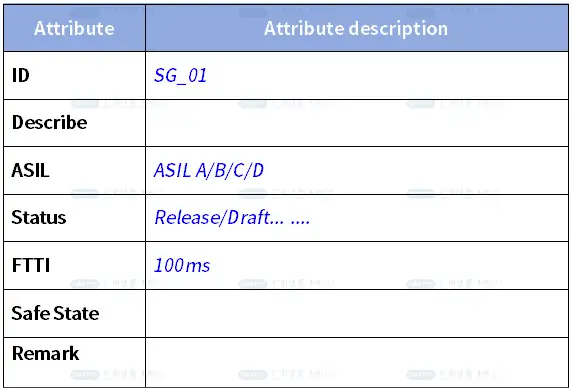
02 安全措施VS 安全機制
【safety measure】activity or technical solution to avoid or control systematic failures and to detect or control random hardware failures, or mitigate their harmful effects.
【safety mechanism】technical solution implemented by E/E fucntions or element, or by other technologies, to detect and mitigate or tolerate faults or control or avoid failures in order to maintain intended functionality or achieve or maintain a safe state.
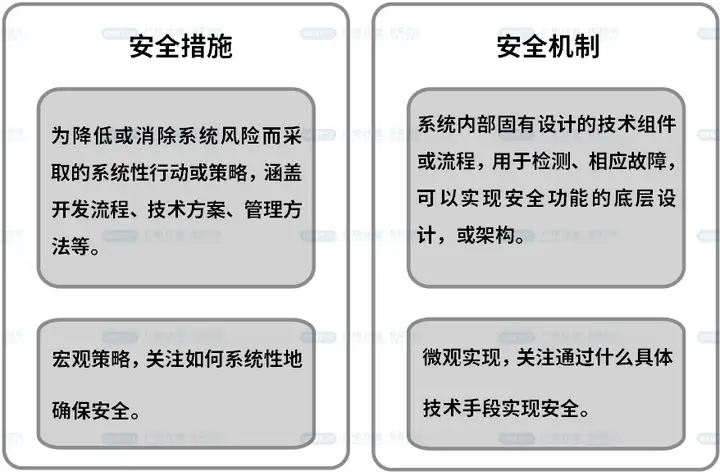
安全措施屬于系統級安全要求的頂層設計,明確所需的安全機制類型;安全機制則是安全措施的技術實現手段。例如:ASIL D系統需采用冗余設計作為安全機制,通過“雙傳感器+多數表決機制”實現故障容錯功能。
03 系統性失效VS 隨機硬件失效
【systematic failure】failure related in a deterministic way to a certain cause, that can only be eliminated by a change of the design or of the manufacturing process, operational procedures, documentation or other relevant factors.
【random hardware failure】failure that can occur unpredictably during the lifetime of a hardware element and that follows a probability distribution.
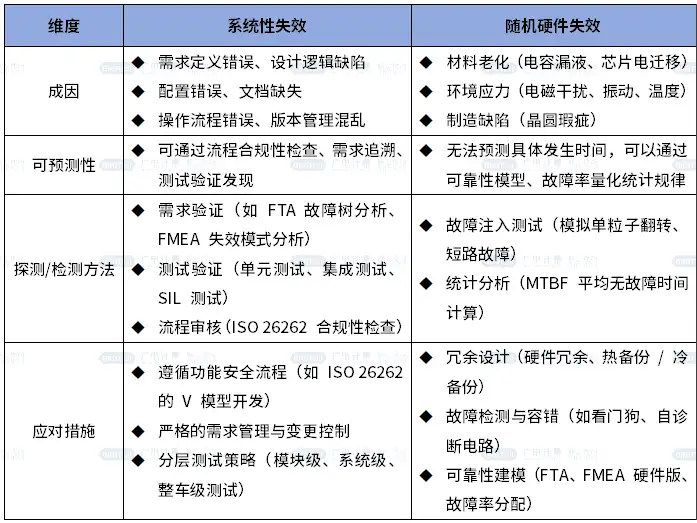
系統性失效是“人因與流程錯誤”的產物,可通過規范開發流程、嚴格測試驗證消除或控制;
硬件隨機失效是“物理世界的不確定性”的體現,需通過可靠性分析、冗余設計降低風險。
04 共因失效VS 級聯失效
【common cause failure】failure of two or more elements of an item resulting directly from a single specific event or root cause which is either internal or external to all of these elements .
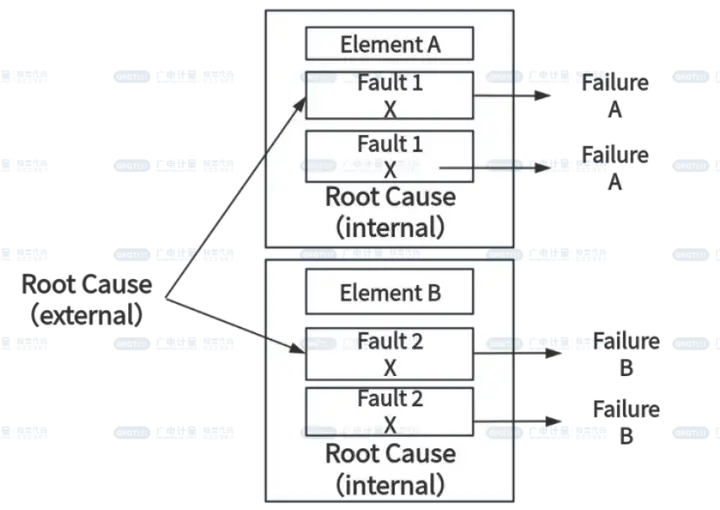
圖1 共因失效
【cascading failure】failure of an element of an item resulting from a root cause [inside or outside of the element ] and then causing a failure of another element or elements of the same or different item.

圖2 級聯失效
在復雜系統中(汽車、航空等)兩者都是導致系統性風險的重要因素,兩者的核心差異如下表所示。
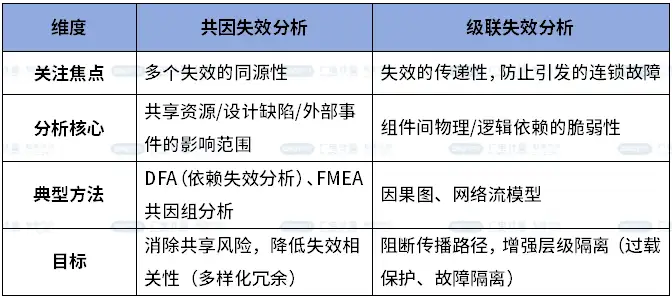
在安全分析過程中,需同步考量共因失效與級聯失效兩類風險:共因失效需通過冗余設計的獨立性驗證,級聯失效分析則需通過傳播路徑建模構建失效隔離屏障。
二者均需結合定性與定量分析方法,并與功能安全開發流程深度融合,最終實現復雜系統失效的全面管控。
05 總結
定義并非是冰冷的存在,而是前輩們在千萬次事故中凝練的安全智慧,唯有理解其內涵,才能在系統開發中把握汽車安全的本質規律。
-
ISO26262
+關注
關注
3文章
38瀏覽量
14577 -
汽車功能安全
+關注
關注
0文章
45瀏覽量
1523 -
功能安全
+關注
關注
2文章
120瀏覽量
5917
發布評論請先 登錄
網絡安全術語大全解讀
虹科分享 | 終端安全防護 | 網絡安全術語列表(上篇)

虹科分享|終端安全防護|網絡安全術語列表(二)

虹科分享|終端安全防護|網絡安全術語列表(二)

虹科干貨 | 帶你了解設備振動監測常見術語!






 技術干貨 | 功能安全術語的暗黑森林
技術干貨 | 功能安全術語的暗黑森林











評論